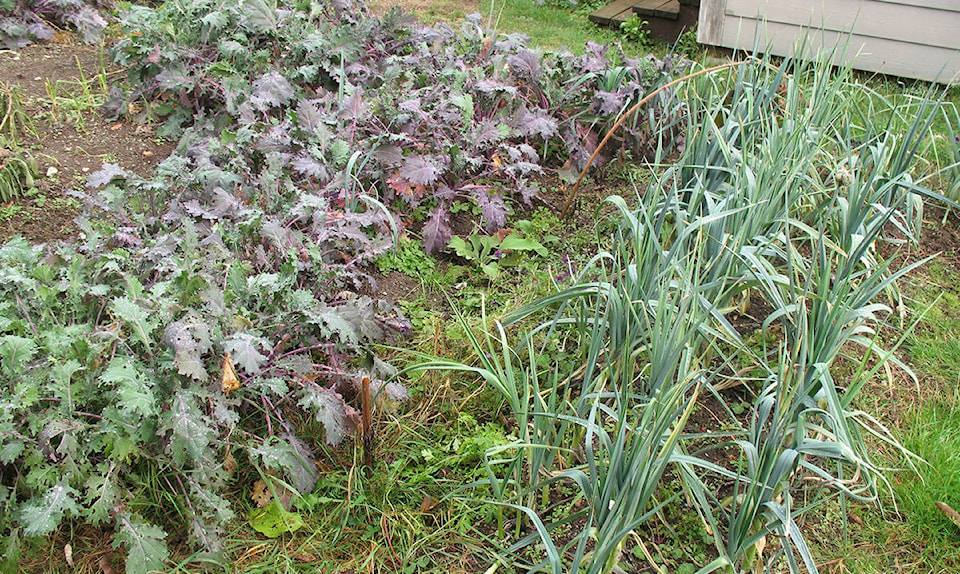By Mary Lowther
I haven’t quite given up on growing salad greens in cold frames during the winter, but it’s getting close. Surely I can outwit those bug-brained slugs and sow bugs, maybe enlist a few bird brains to help — hungry birds that will devour these garden-destroyers’ eggs next spring when I callously stop supplying the birds winter feed and force them to forage in the garden.
That might work next year, but it’s too late for this year. I’ve tried everything the books recommend except prohibitively expensive copper tape which, apparently, doesn’t work unless one keeps it scrupulously clean. Garden soil and clean are an oxymoron.
Since we weren’t here during the window of seed-sowing opportunity for Brussels sprouts, cabbage and cauliflower that normally see us through the winter, all I’ve got is kale and leeks that survived not being watered during the summer. If I couldn’t water my garden at all, these, along with garlic, would be on my “required” list. It’s too bad that David breeds true to his English roots and thinks kale and leeks belong in the compost heap. He doesn’t like barley either, so don’t even try to feed him Scotch broth. I’m beginning to see a connection.
Last spring I had lots of kale and leek seeds from the previous year so I used them as cover crop for a few beds selected specifically to avoid detrimental allelopathy with crops in ensuing years. “Allelopathy” refers to the chemicals exuded by plant roots that may help or hinder the growth of other plants. Kale doesn’t harbour club root, but I was still careful to sow it on next year’s beds that won’t hold cruciferous vegetables known to succumb to club root. Beans grown in beds recently occupied by members of the onion family, like leeks, don’t grow well, so my leek cover crop is in beds that won’t contain beans for a few years.
Fortunately kale and leeks do quite well in our winters that are clearly too cold for slugs. I’ve read that slugs don’t like the onion family, but in Victoria they ate my winter onions to the ground and left my kale patch in shreds. David says they must have been starving, but I did notice a bit of Brogue when I overheard them gossiping when they thought no one was listening.
Thankfully, during the winter up here these beasties confine themselves to the cozy cold frame and greenhouse, but I find it aggravating to read countless articles bragging about the delicious lettuces other gardeners grow during winter in their cold frames. Speaking of kale, here’s a terrific recipe that David doesn’t like so there’s more for me:
Kale Nut Chips
1 head kale
2 cloves garlic
½ cup nuts
¼ tsp cayenne
1 sweet red pepper, seeded, or 15 g. dried tomatoes and 1 Tbsp lemon juice
¼ tsp salt
If using dried tomato: soak nuts and tomato in water to cover for at least two hours. Drain water, reserving ¼ cup. Add the nut mix to the blender with ¼ cup of liquid and everything else except the kale. Blend till smooth.
If using sweet red pepper: just add it to the other ingredients and blend till smooth.
Remove leaves of kale from the stalks and tear into pieces as big as you like. Place kale in large bowl and add the nut mixture, mix with spatula until all the kale is covered. Bake at 350 F for 10 to 15 minutes, or dehydrate on oiled trays for four to six hours.
